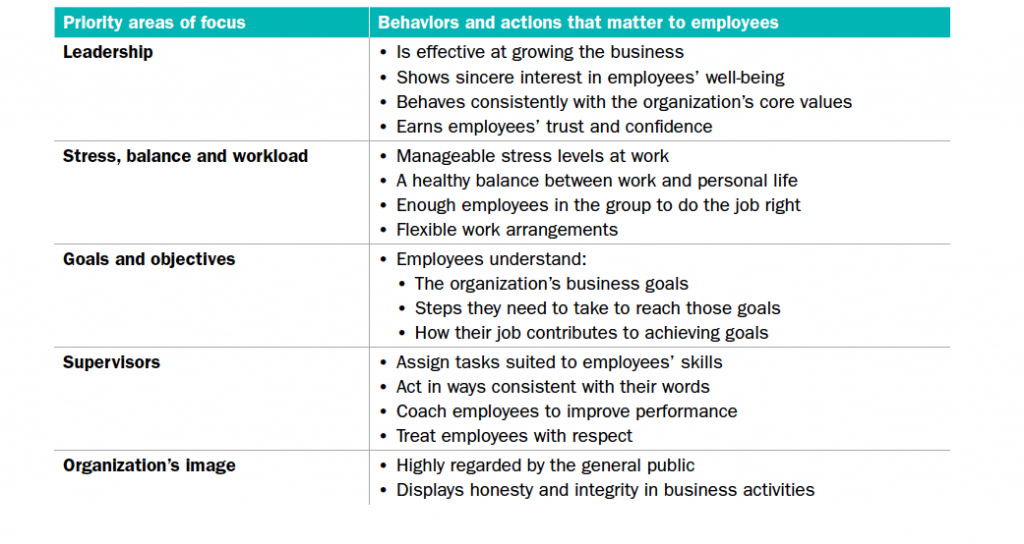 Over the last decade engagement has become a corporate buzzword, calling for different engagement programs and initiatives, all aiming at the same goal of making employees to ‘go that extra mile’. However, the recent Global Workforce Study by Towers Watson (TW) shows that the actions taken by organizations seem to be falling short, as just 35% of the 32,000 survey respondents indicated to be highly engaged, while 22% felt unsupported, 17% detached and the remaining 26% disengaged.
Over the last decade engagement has become a corporate buzzword, calling for different engagement programs and initiatives, all aiming at the same goal of making employees to ‘go that extra mile’. However, the recent Global Workforce Study by Towers Watson (TW) shows that the actions taken by organizations seem to be falling short, as just 35% of the 32,000 survey respondents indicated to be highly engaged, while 22% felt unsupported, 17% detached and the remaining 26% disengaged.
Providing a snapshot of the situation, the TW professionals argue that “companies are running 21st-century businesses with 20th-century workplace practices and programs.” Indeed, given a decade of rapid technological development, increased globalization and, finally, the last five years of economic turmoil, this discrepancy does not seem surprising, nor does the resulting decrease in employees’ engagement. As the survey authors state about employees, ‘many have been doing more with less, and for less’, which has eventually led to the point where maintaining engagement over time becomes quite challenging. The main underlying reasons identified in the survey lie within the shortcomings of traditional engagement models to provide workers with sufficient internal support, resources and tools; and to create an energizing environment that would promote physical, emotional and social well-being. The TW professionals present the term sustainable engagement to reflect the realities of today’s pressured and fast-paced work environment, and to close the aforementioned gaps of traditional engagement models.
According to TW, sustainable engagement describes the intensity of employees’ connection to their organization based on three elements. First, it is about the extent of employees’ effort put into work, in other words the engagement in the traditional sense. Second, it is about being enabled, meant as working in an environment that supports productivity in several ways. Finally, sustainable engagement is about feeling energized, thus working in an environment that promotes well-being. Indeed, scholars have long argued that engagement reflects a motivation to invest one’s physical, emotional and cognitive energies in performing a role (Kahn, 1990).
The logical question, then, is how can sustainable engagement be achieved? Having tested the relative impact of different workplace elements on sustainable engagement, the TW survey brought up five main drivers that display the greatest collective impact on engagement. Specifically, the top drivers listed are leadership; stress, balance, and workload; goals and objectives; supervisors; and an organization’s image. The following table demonstrates the five drivers and the respective practices that make a difference to employees in terms of sustainable engagement.
Table 1. Top five drivers of sustainable engagement (Source: The Global Workforce Study by Towers Watson)
It should be noted that the table does not include any elements of reward (e.g. salary), which rather influence attraction and retention of employees, whereas engagement drivers focus on organizational culture, managerial style and interpersonal relations of the work environment.
Last but not least, emphasizing the importance of sustainable engagement in organizations, the study reports that operational margin (or return on sales) of organizations high in sustainable engagement was close to two times higher compared to those with high traditional engagement, and close to three times higher compared to organizations with low traditional engagement. Hence, sustainable engagement clearly links to organizational financial performance, thus becoming a relevant tool for improving performance with little significant monetary investments.
Further reading:
Kahn, W.A. 1990. Psychological conditions of personal engagement and disengagement at work. Academy of Management Journal, 33: 692-724.


